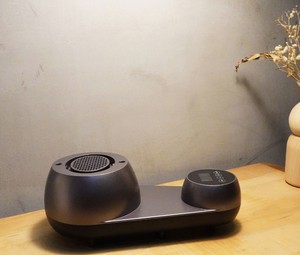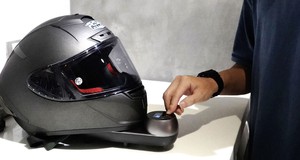
All categories
Featured selections
Trade Assurance
Buyer Central
Help Center
Get the app
Become a supplier

(978 products available)


















































UV-Based Cleaning Systems
An automatic hat cleaner that uses UV light is a modern and very effective machine. These tools use UV light to kill germs and clean hats faster than most other ways to do it. It's great for businesses with many hats to clean, like sports teams or hat stores. The machine is small and works fast, cleaning many hats each day. It uses less water and fewer chemicals than other methods, making it safe for the planet. Its small size makes it easy to fit into tight workspaces, and its efficiency lowers cleaning costs over time.
Steam Hat Cleaners
A hat steam cleaner is a machine that cleans hats using steam. The steam removes dirt and stains without hurting the shape of the hat. This method is good for cleaning delicate hats that might be damaged by stronger cleaning methods. The machines using steam are bigger and work faster, making them good for cleaning many hats at once. They are used in factories where lots of hats need to be cleaned quickly. The machines also remove odors with the steam. However, while they clean well, they need power to produce steam, which could increase bills.
Dry-Cleaning-Only Hat Cleaners
This type of machine cleans hats using a method like dry cleaning clothes. It uses special solvents to clean hats that cannot be washed at all, which is helpful for cleaning expensive or delicate hats made of special fabrics. These machines work in both big and small places, from dry-cleaning shops to small home businesses. They are essential for those who need to clean fragile hats that can't handle water. They do require solvents to clean, which need careful handling and some extra expense, but they are good at cleaning tough spots or old grime.
Exterior Frame and Body
Automated machines have strong bodies made from steel or special plastics to last a long time. Most cleaners have covers that keep the water or dust inside, often with clear windows so users can see what's happening. Even the outside part needs to look nice and be easy to use for customers.
Interior Cleaning Parts
Hat cleaners have special pieces inside them made for cleaning the hats. Brushes or pads scrub the hats, and heaters may help them dry or look new again. Some machines use chemicals that latch onto dirt and then get washed away. The cleaning pieces need to be tough, but also soft enough to not hurt the hats. Inside parts often need to be changed or cleaned themselves after a while.
Hat Holding Mechanism
How the hat is held varies by model. Quick ones just flip a lever to clamp the hat down. Better models rotate cleaners around a fixed hat, scrubbing all areas while the hat stays still. Expensive industrial ones have automated arms that transfer the hats between cleaning zones. This boosts speed for larger tasks. Good hat cleaners ensure nothing shifts out of place as it cleans to keep the hat's shape intact. Gentle handling guarantees even tough fabrics emerge undamaged.
Controls and Settings
Users control the machines through buttons or touchscreens. Simple models let users choose basic washes, while advanced ones remember special cleans for certain hat styles. More professional machines offer deep cleaning options that need more scrubbing. These control panels also show how much cleaning fluid remains or when internal parts need servicing. Users can also control which attachments to use. This allows one person to clean many hats without hassle.
Size and Portability
Smallest machines weigh under 10 pounds and sit on countertops. Medium models, around 50 pounds, require floorspaces but are still portable with wheels. The largest, for commercial uses, may weigh over 500 pounds, taking up huge areas. Though the big ones clean more powerfully, they often can't be moved easily. Picking the right size depends on how many hats need cleaning. Rotary ones are best for large jobs, while small cleans one at time.
Home Cleaning
For daily use at home, a small automatic hat cleaner machine is best. It does light cleaning, like freshening hats from daily wear, removing sweat and oils. This keeps the hat from looking dirty over time. Quick cleans in just minutes help hats stay good until a deeper clean is needed. Daily freshening keeps dirt from building up and preserves the hat through regular usage.
Hat Retail Stores
In stores selling hats, machines clean new hats before they go to customers. This ensures each hat looks its best when bought. It also helps hats that get dirty from people trying them on. Machines quickly clean many hats to boost sales speed. Clean hats lead to happier customers and more sales, as customers notice the effort to keep everything tidy.
Restaurants and Outdoor Venues
In places like restaurants or shows, people wear hats, so machines clean them on the spot. Setting a machine by the door lets customers get hats cleaned fast before leaving. This removes dirt and odors gained during the visit. It boosts the venue's care for service and gives customers a nice farewell. Fast cleaning improves customer satisfaction as hats feel refreshed immediately.
Sports Teams
For sports team headwear, machines tackle tough grime from sweat and game days. It ensures jerseys stay in great shape after intensive use without costing a fortune. Quick full washes keep the gear fresh and help it last longer. Keeping team gear clean aids in overall performance as players have lighter, fresher equipment to work with.
Travel and Outdoor Use
A travel-friendly hat cleaner enables on-the-go freshening. It takes off sweat and grime picked up on hikes or during trips, so gear stays usable longer. The compact size fits in bags for fresh hats anywhere. This prevents odors from taking over, ensuring a more pleasant journey. Being able to clean hats stops wear from building up and keeps them intact through adventures.
Key Specs to Know
When getting a hat cleaning machine, pay attention to some important features. First, look at the kind of cleaning it does. Some wash hats with water, while others use dry cleaning or steam that stays gentle. The power level is key, too - stronger motors get through more grime fast. For commercial needs, hurrying is vital, so machines that clean lots at once are best. More settings allow deep cleaning of delicate and strong fabrics. Finally, check that the machine is tough enough to handle daily heavy use.
Regular Upkeep
The cleaning parts need care, too. Brushes and cleaning pads get worn down, so replace them every few months. This keeps everything at its best. Daily cleaning of the innards stops old dirt from piling up. Take time weekly to clean filters and other pieces to let air flow easily. Wipe down anything that gets filthy as soon as the job ends. For filters or similar, have a separate space for that kind of work if needed.
How to Maintain the Machine
Giving the machine a break after many hours is smart. Let it rest between uses so it doesn't overheat. Always follow the manual for care and safety steps. Cover it up between uses to keep dust or other things out when it's not being used. Keep the outside cleaned, too, to make sure it lasts a long time.
Storing the Machine
A storage spot needs to be dry and cool for the machine to stay good over time. It shouldn't sit where water could splash on it by chance. Make sure the place has power if the machine needs it to work. If it has wheels, they can lock to keep the machine stable when parked in storage. If there are any cords, find a way to keep them tidy so they don't become a problem during future uses.
A1: Machines handle fabrics like cotton, wool, and synthetics well. These materials are common in many hats. Machines treat delicate items like straw or leather carefully, too. They clean each type effectively without harm.
A2: No, these machines don't clean any clothes. Only the hats themselves go in for a cleaning. They focus entirely on making the hats fresh without touching anything else.
A3: Machines do a thorough job quickly. The cleaning power matches tough hand cleaners. But with special tools, machines delicately clean sensitive fabrics safely.
A4: Yes, don't place food or drink nearby. These items could fall in by mistake. Dangers like smoke or heat also need distance for safety.
A5: Look closely at each machine's features. Check which cleaning methods they use. Examine the size and capabilities, too. These details reveal how well one performs over another.